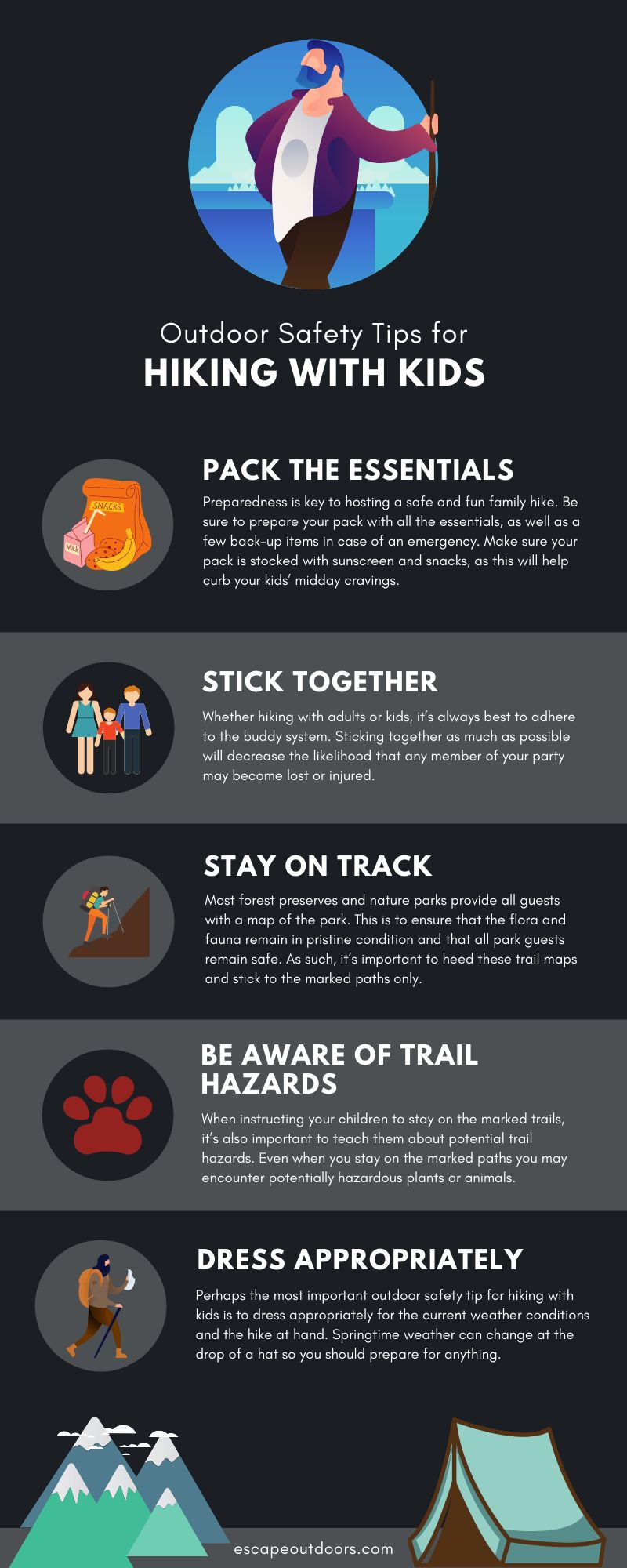
Embarking on a hiking adventure with young children can be an exciting and memorable experience for the whole family. However, it is crucial to prioritize safety and take necessary precautions to ensure a smooth and worry-free journey. As you venture into the great outdoors, it becomes essential to consider factors such as choosing appropriate trails, packing essentials, supervising children, and preparing for emergencies. By following these simple yet vital safety measures, you can create a safe and enjoyable hiking experience for both you and your little explorers.
Choose appropriate trails
When hiking with young children, it is important to choose appropriate trails that will ensure their safety and enjoyment throughout the journey. One of the first things to consider is the difficulty level of the trail. Make sure to pick a trail that matches the fitness and endurance level of your children. This will prevent them from getting too tired or overwhelmed during the hike, reducing the risk of accidents or injuries.
Additionally, check for designated kid-friendly trails in your area. These trails are specifically designed with children in mind, offering shorter distances and easier terrain. They often feature interactive elements, such as nature displays or educational signs, which can enhance your children’s hiking experience.
Before embarking on any hike, take the time to research and gather information on the trail conditions and its popularity. Look for recent trail updates, including any closures or hazardous conditions. Knowing what to expect will help you plan better and make informed decisions about whether a particular trail is suitable for you and your children.
Plan and prepare
Proper planning and preparation are key to ensuring a safe and enjoyable hiking experience with young children. Start by reviewing weather forecasts. Check for any predicted extreme weather conditions or changes in weather patterns that may affect your hike. This will help you determine the best time and day to go hiking, avoiding any potential weather-related risks.
Next, pack essential safety items that will come in handy during the hike. These include a well-equipped first aid kit, sunscreen, insect repellent, and a map and compass or GPS device. It is important to be prepared for any unexpected situations and emergencies that may arise along the trail.
Ensure you bring enough food and water for both you and your children. Hiking can be physically demanding, and it is crucial to stay hydrated and energized throughout the journey. Pack nutritious snacks and meals that will sustain your children’s energy levels and keep them motivated.
In terms of clothing and footwear, it is important to dress appropriately for the hike. Choose lightweight and moisture-wicking clothing that will keep your children cool and comfortable. Opt for sturdy and supportive footwear that provides good traction and protects their feet from potential hazards on the trail, such as sharp rocks or thorny plants.
Lastly, create a detailed hiking plan. This should include information about the trail you will be hiking, the estimated time it will take to complete, and any specific landmarks or points of interest along the way. Share this information with someone who will not be joining you on the hike, such as a family member or friend, for added safety.
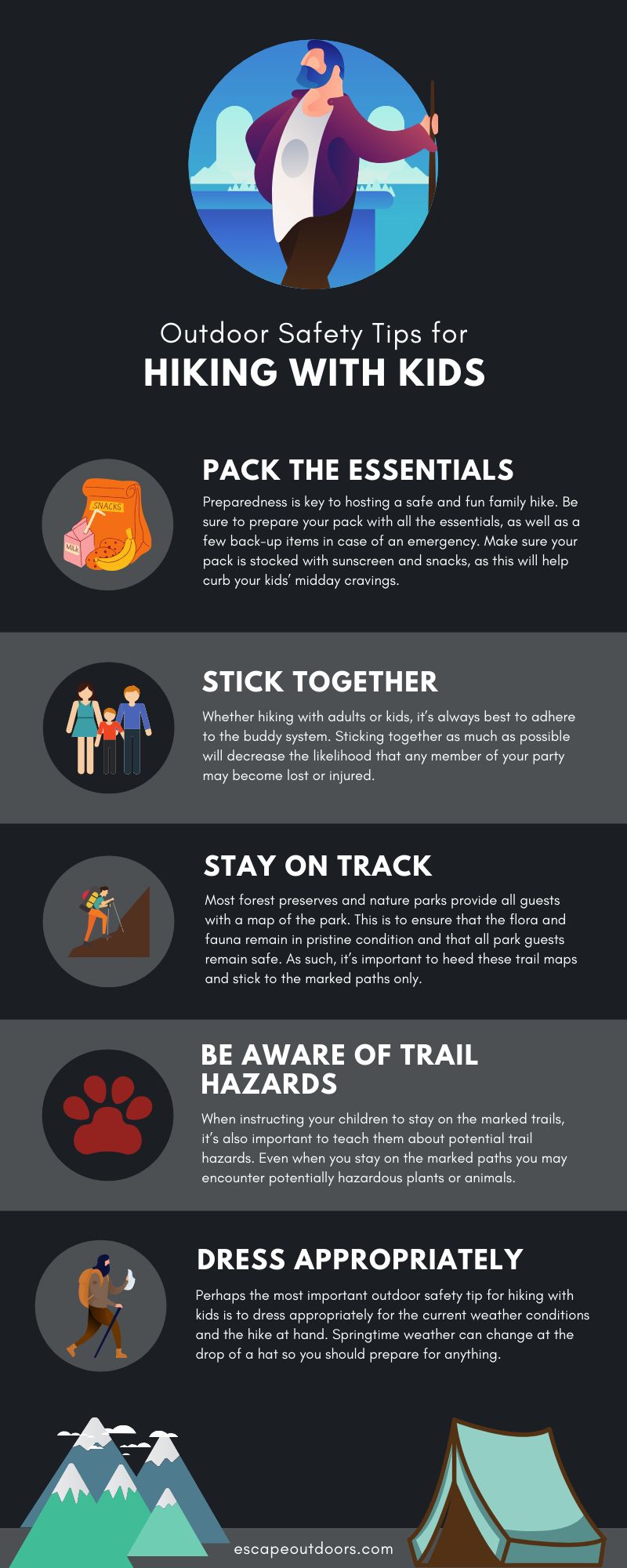
This image is property of cdn.shopify.com.
Educate the children
Before setting off on your hiking adventure, take the time to educate your children about hiking safety. Teach them basic hiking rules, such as staying on the trail, not disturbing wildlife or vegetation, and properly disposing of any trash. Instilling these principles will help them develop a sense of responsibility towards the environment and reinforce the importance of leaving no trace.
Emphasize the importance of staying together as a group throughout the hike. Explain that wandering off or getting separated can be dangerous, especially in unfamiliar surroundings. Encourage them to always stay within sight of an adult and to notify someone if they need to use the restroom or take a break.
Discuss potential hazards and how to respond to them. Teach your children to be cautious and alert when hiking, keeping an eye out for potential dangers such as loose rocks, slippery surfaces, or steep drop-offs. Explain how to respond in case of emergencies, such as getting lost or encountering wildlife. Equip them with the knowledge and confidence to stay calm and follow your instructions.
Take the opportunity to train your children about the local flora and fauna they may encounter on the trail. Educate them about the plants and animals that are native to the area and teach them how to observe and appreciate them from a safe distance. This will not only enhance their hiking experience but also foster an understanding and respect for the natural world.
Consider physical limitations
When hiking with young children, it is crucial to consider their physical limitations and choose hikes that match their capabilities. Assess their fitness level and take into account any medical conditions or physical restrictions. This will help you determine the appropriate difficulty level for the hike and ensure that your children will be able to complete it comfortably.
Choose hikes that are within a reasonable distance and duration for your children. Long and strenuous hikes may be too challenging for their developing bodies and may lead to fatigue or injuries. Opt for shorter hikes with frequent opportunities to rest and take breaks.
During the hike, make sure to take frequent breaks to allow your children to rest and recharge. This will prevent them from getting too tired or exhausted. Use these breaks as an opportunity to hydrate, eat snacks, and appreciate the natural surroundings.
Avoid steep and rocky terrains that may pose a higher risk of accidents or injuries. Stick to well-maintained trails that are relatively flat and have clearly marked paths. This will provide a safer and more enjoyable experience for both you and your children.
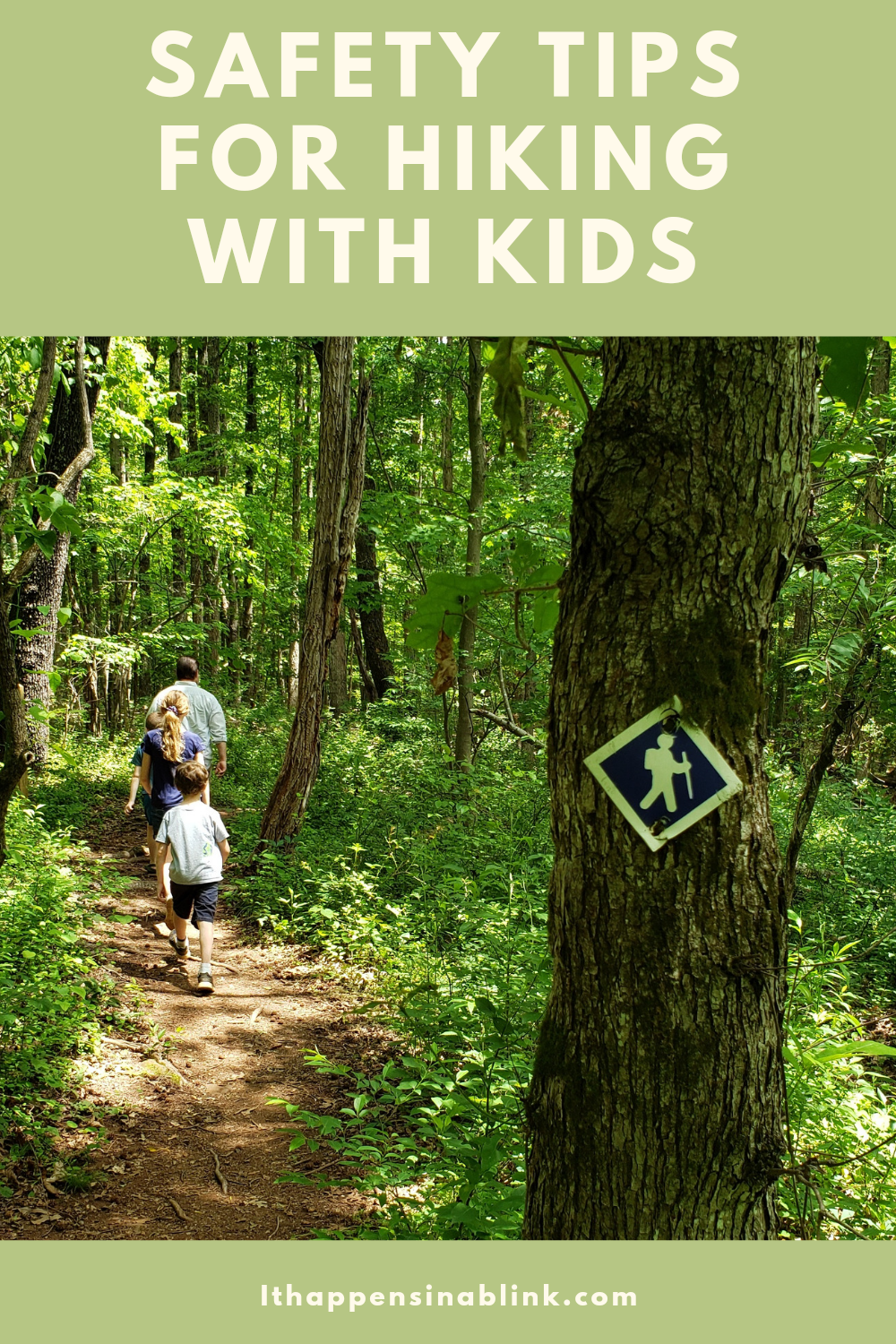
This image is property of ithappensinablink.com.
Ensure adequate supervision
When hiking with young children, it is vital to maintain adequate supervision at all times. This will help prevent accidents, ensure their safety, and allow you to respond quickly in case of emergencies.
Maintaining a low child to adult ratio is essential. Try to have a sufficient number of adults accompanying the children to provide individual attention and guidance. This will allow you to give each child the attention they need and ensure that no one is left behind or unattended.
Keep children within sight at all times, especially in areas where the trail may become narrow or winding. This will help you monitor their progress, prevent them from going off course, and allow you to quickly address any concerns or issues that may arise.
Assign a designated leader and sweep for the hiking group. The leader should be responsible for setting the pace, navigating the trail, and ensuring that everyone stays on the designated path. The sweep should bring up the rear, making sure no one is left behind and providing support and encouragement as needed.
Implement a buddy system, especially if you are hiking with a larger group of children. Pair each child with a buddy, encouraging them to look out for and support each other throughout the hike. This will foster a sense of camaraderie and teamwork, while also providing an extra layer of supervision.
Assess and mitigate risks
When hiking with young children, it is important to assess potential risks and take steps to mitigate them. Identifying and addressing these risks will help ensure a safer and more enjoyable hiking experience for everyone.
Before starting the hike, take the time to identify potential hazards along the trail. Look out for areas that may be prone to landslides, falling rocks, or unstable ground. Avoid these areas or take extra precautions, such as staying away from cliff edges and encouraging children to walk carefully.
Stay alert for wildlife encounters. While seeing animals in their natural habitat can be an exciting experience, it is important to keep a safe distance and avoid feeding or approaching them. Educate your children on how to behave around wildlife, emphasizing the importance of observing from a distance and not disturbing their natural behaviors.
Prevent insect bites and ticks by applying insect repellent and wearing long-sleeved shirts and pants. Teach your children to stay away from areas with dense vegetation, where ticks are more likely to be found. Conduct regular tick checks throughout the hike and make sure to remove any ticks promptly, following proper guidelines.
Be cautious near water bodies, such as rivers, lakes, or streams. Always supervise your children closely when near water and be aware of their swimming abilities. Avoid unstable banks, strong currents, or slippery surfaces, as they can pose a significant risk. It is also a good idea to familiarize yourself with basic water safety techniques and first aid.
Teach your children to identify poison ivy and other irritants along the trail. Make sure they understand the importance of avoiding contact with these plants and how to recognize and treat any potential rashes or irritations. Encourage them to stick to the designated trail and avoid straying into areas with dense vegetation.
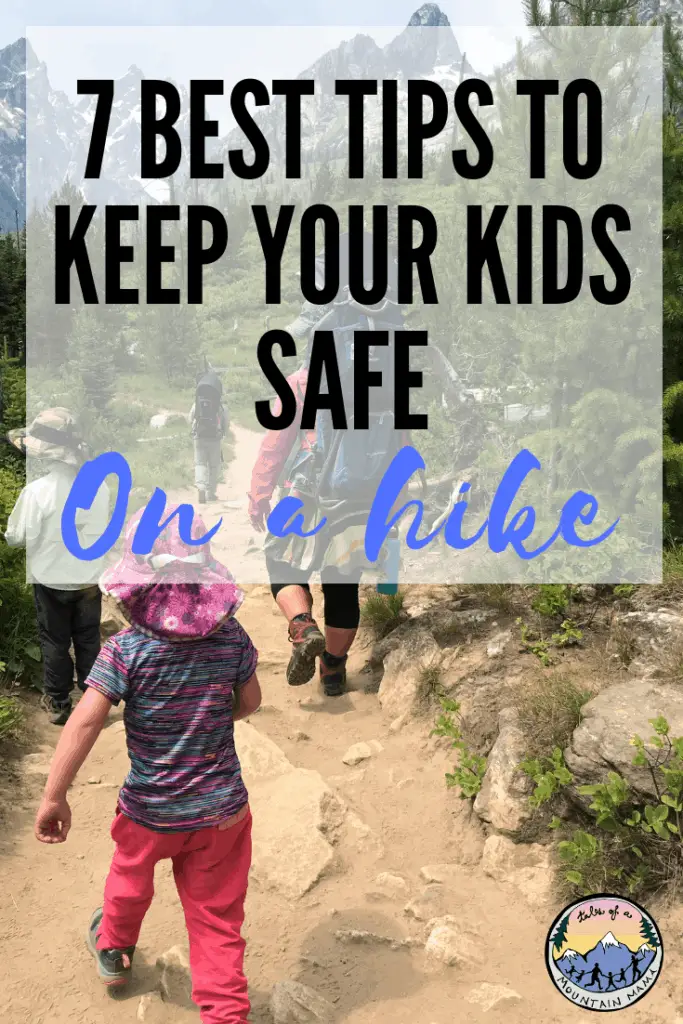
This image is property of talesofamountainmama.com.
Communicate with your children
Establishing clear communication methods with your children is essential for their safety and your peace of mind. Make sure they know how to reach you or a designated adult in case of separation or emergencies. Set clear expectations and guidelines for communication before starting the hike.
Teach your children how to use a whistle. Demonstrating the appropriate whistle signals for different situations, such as getting lost or signaling for help, can be extremely helpful in case of emergencies. Make sure they understand when and how to use the whistle and reinforce the importance of staying calm.
Demonstrate emergency signals, such as waving a bright-colored item or building a signal fire, in case they become lost or need to attract attention. Practice these signals with your children so that they know what to do in an emergency situation. Reassure them that these actions will help rescuers locate them quickly.
Discuss what to do if separated from the group. Teach your children to stay in one place if they realize they are lost and not to wander further. Instruct them to call out for help at regular intervals and be aware of their surroundings. Encourage them to stay calm and wait for an adult to find them or for help to arrive.
First aid and emergency preparedness
Carrying a well-equipped first aid kit is essential when hiking with young children. Make sure your first aid kit contains basic supplies such as bandages, antiseptic creams, tweezers, and adhesive tape. It is also recommended to include any specific medications or allergy remedies that your children may require.
Learn basic first aid techniques that can be useful in case of injuries or accidents. Familiarize yourself with proper wound cleaning and dressing procedures, as well as CPR and rescue breathing techniques. Knowing these skills can potentially save lives in emergency situations.
Research and know the location of the nearest medical facilities to your hiking trail. Being aware of the closest hospitals, urgent care centers, or ranger stations will help you respond quickly to any medical emergencies. Consider bringing a list of emergency contact numbers and relevant health information for each member of your hiking group.
Create an emergency action plan with your children before starting the hike. Discuss various scenarios, such as getting lost, injuries, or sudden changes in weather, and outline appropriate responses and actions. Make sure your children understand the plan and feel confident in executing it if the need arises.
Familiarize yourself with cell phone coverage in the area where you will be hiking. Be aware that some trails may have limited or no cell phone reception. Communicate this to your children and emphasize the importance of staying together and relying on other communication methods, such as whistles or emergency signals.
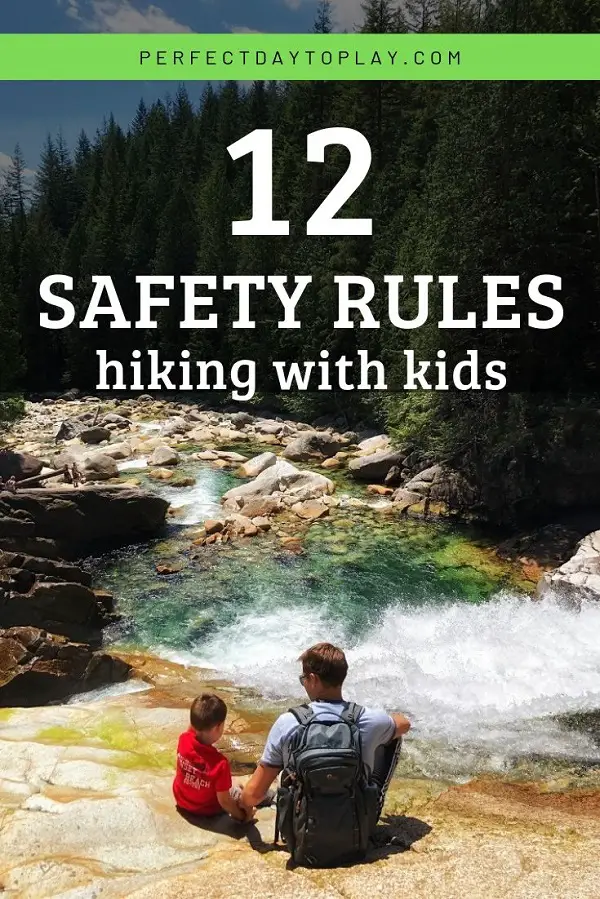
This image is property of perfectdaytoplay.com.
Be mindful of weather conditions
When hiking with young children, it is crucial to be mindful of weather conditions. Extreme weather can pose significant risks and can make hiking unsafe and uncomfortable. Before heading out on your hike, consider the following precautions to ensure the safety of your children.
Avoid hiking during extreme weather conditions such as thunderstorms, heavy rain, or extreme heat. These conditions can increase the chances of accidents or health-related issues. Check weather forecasts and reschedule your hike if there are any warnings or advisories in your area.
Watch out for signs of changing weather during your hike. Keep an eye on darkening skies, sudden drops in temperature, or increasing wind speeds. These can be indicators of impending storms or other weather events. Be prepared to take shelter or change plans accordingly.
Prepare for sudden weather changes by dressing in layers. This will allow you and your children to adjust your clothing according to the changing weather conditions. Pack extra layers, such as jackets or raincoats, in case of unexpected rain or temperature drops.
Respect trail etiquette
When hiking with young children, it is important to teach them about proper trail behavior and respect for other hikers. Practicing good trail etiquette will not only ensure their safety but also promote a positive and harmonious hiking experience for everyone.
Teach your children to yield to other hikers, especially on narrow or congested sections of the trail. Encourage them to step aside and allow faster hikers or larger groups to pass. Teach them to be courteous and respectful, greeting other hikers with a smile or a friendly nod.
Practice Leave No Trace principles with your children. Instill in them the importance of leaving the trail and surrounding environment just as they found it, or even better. Teach them to pick up any trash they may come across and dispose of it properly. Emphasize the significance of preserving the natural beauty and integrity of the trail.
Encourage your children to be mindful of their noise levels while hiking. Explain that loud noises and excessive shouting may disrupt the peacefulness of the trail and disturb wildlife. Foster a sense of appreciation for the tranquility and serenity of nature, encouraging them to observe and appreciate in silence when appropriate.
In conclusion, hiking with young children can be a wonderful and rewarding experience. By following these safety precautions and guidelines, you can ensure that your hiking trips are fun, educational, and, above all, safe for the whole family. Take the time to choose appropriate trails, plan and prepare adequately, educate your children about hiking safety, consider physical limitations, provide adequate supervision, assess and mitigate risks, communicate effectively, be prepared for emergencies, be mindful of weather conditions, and always respect trail etiquette. By implementing these measures, you can enjoy memorable and worry-free hikes with your children while instilling in them a lifelong love for the outdoors.
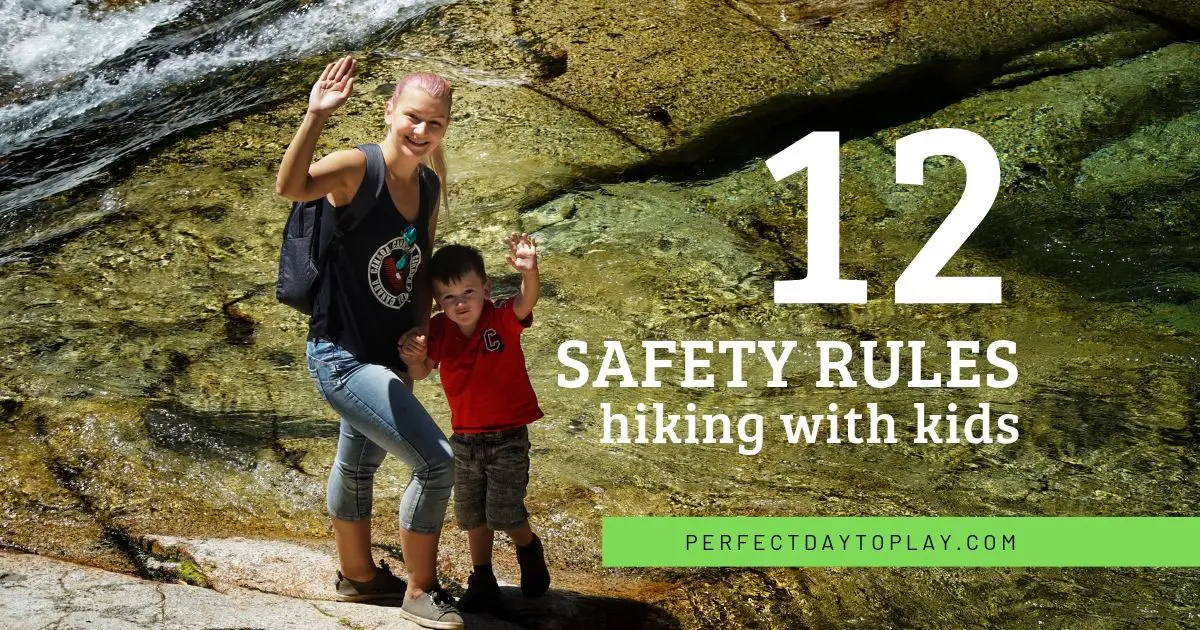
This image is property of perfectdaytoplay.com.



